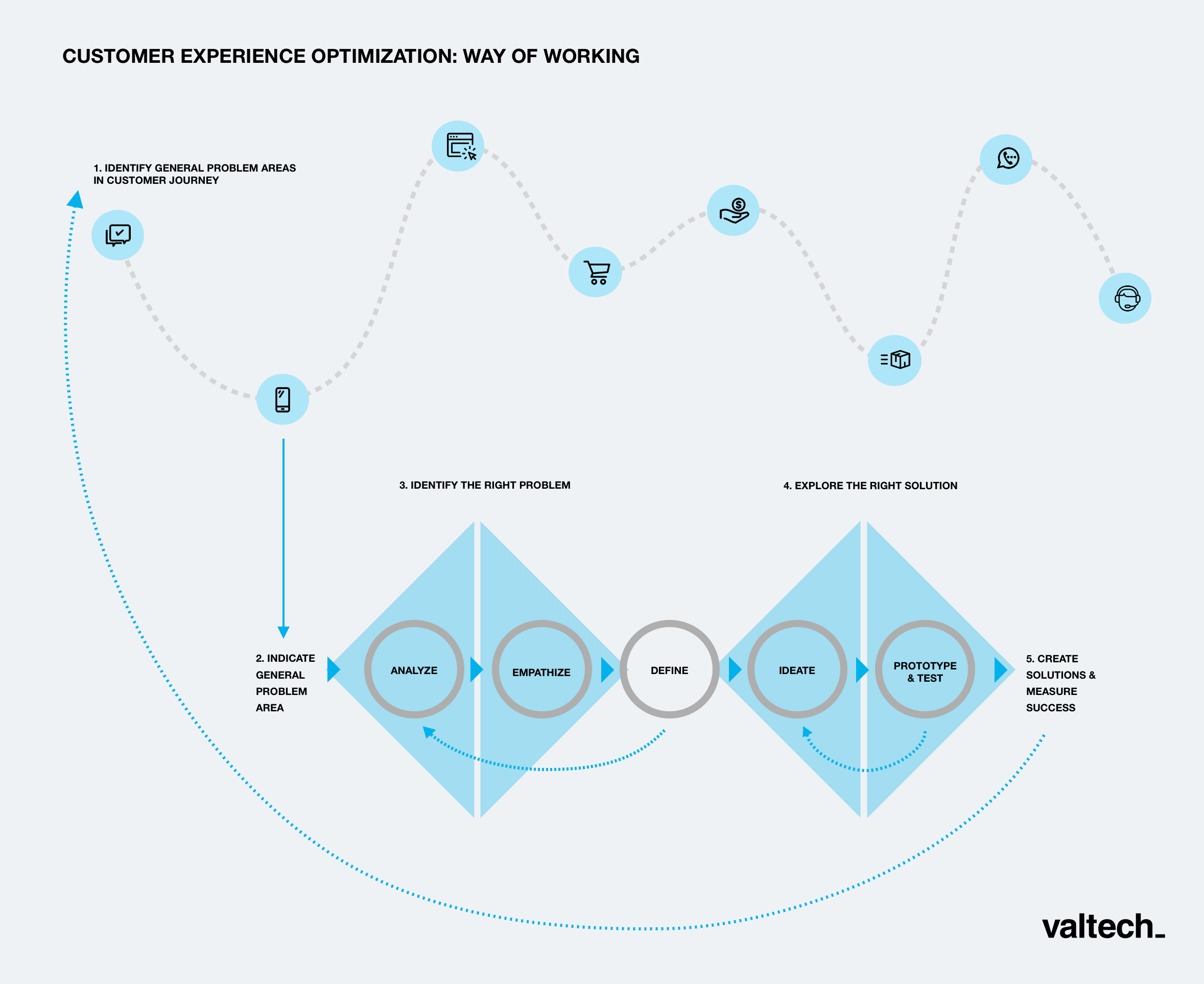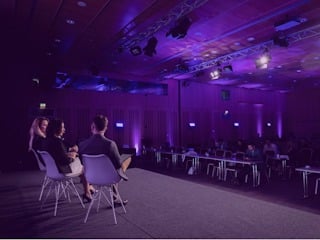Avoid the experience gap
This deep-rooted, inside-out approach has several consequences for organisations. A customer journey based on organisational assumptions and preferences offers no guarantee that it will meet the actual needs of the customer. You can determine as many online KPI goals as you want, but you will probably end up measuring the wrong things, not meeting the wishes of the customer and creating an experience that is completely out of step with what they need. Although you, as a company, may define what you see as an “ideal customer journey”, the customer may see it very differently. We call this difference the experience gap.
And what does that mean in practice?
Suppose you have a web shop and an important KPI is fast order deliver. Following some process optimisations, your delivery time is faster than ever. Happy customer, you think. But what if delivery time is not the customer’s top priority at all? What if a personal experience matters far more to them than same-day delivery?
Based on the best of intentions, you have set out to optimise the customer journey, but your lack of insight means you end up missing the mark. What could you have done differently to avoid this happening? Employ a healthy dose of CXO.
But what should you be doing then?
It should be clear: thinking solely from the business’s viewpoint is passé. And, actually, wildly illogical: customers buy products or services, so those products or services should match what they want. If you have truly adopted this CXO mindset yourself and embedded it in your company then great, you can hit the road to get to know your customer. Really get to know. Through feedback forms, interviews and spontaneous conversations. Through statistical analysis, quantitative surveys and input from customer service, and connecting relevant disciplines and using the appropriate marketing tools. This is the only way to learn about and understand your customers’ journey. Gather enough input and you can spot the pain points and respond to and test them.
Looked at this way, it sounds like a very logical way of working and thinking. And it is, yet organisations can still find it very hard to get on board. Our colleagues Nicky Rog and Renske Jongbloed are happy to help you with this if you like – just contact them.
“Get away from focusing on conversion and sales and really look at the customer instead. And not as a walking wallet, but as a person.”
- Renske Jongbloed, Sr Customer Experience Designer

Get out of the mainstream and move ahead of your competitors
Okay, so we now have a bit of an idea of what CXO is, but how does this methodology differ from the more top-down approach we often see?
1. Set user goals as well as business goals
Of course, it’s important to set company goals, such as conversions, downloads and leads, but it is also important to look at what users want to achieve – what their primary purpose is. Define this throughout the entire customer journey: the different phases in the journey and the different touch points that a customer encounters. Measurement methods such as the Net Promoter Score (NPS) and Customer Effort Score (CES) function as feelers for the overall customer experience and indicate where the experience gap is greatest. With in-depth research, such as data analysis, user research and stakeholder conversations, you can identify the true cause of the customer's problems.
2. From features to value
The first point naturally leads to the second, which is the essential realisation that optimising a customer journey is not about spitting out features in record time. More is not always better, and certainly not if customer needs are not considered as part of the process. A simple example: the checkout flow of your web shop can look oh so slick, but if you don’t offer the correct payment options, your customer (and so you) will not benefit from this. It is important to define a higher goal and, with each new element in the customer journey, ask yourself whether it actually contributes to that goal. If not, well, sorry, but you either need to adjust it – or kill it.
3. From touchpoint-optimisation to experience-optimisation
A CXO methodology involves looking beyond an app or website – touchpoints. Instead, with CX, you focus on the entire customer journey, from A to Z. This journey takes you to various places, such as a store, dealer or customer service. Through the total experience. All this information contributes to completing the puzzle known as “your customer and their journey”.
4. From short-term sales to longer-term loyalty
We get it: money makes the world go around. We understand that turnover is a primary goal in any commercial company. But we firmly believe that you generate more revenue through long-term customer loyalty than through short-term sales. Ultimately, gaining a new customer costs much more than turning an existing customer into a returning one. But you only get returning customers by taking their wishes, preferences and needs seriously.
More than worth the effort
CXO has quite a few aspects to it. Not only does it involve overhauling the way you work, it also involves addressing the underlying mindset. And if you really want to do it right, this often involves a complete business transformation as well. Yes, that’s no easy option, but the reward is more than worth it. Your company exists to make the lives of customers nicer, pleasanter or easier. It’s only through really understanding their lives, motivations and preferences that you can achieve long-term success.







